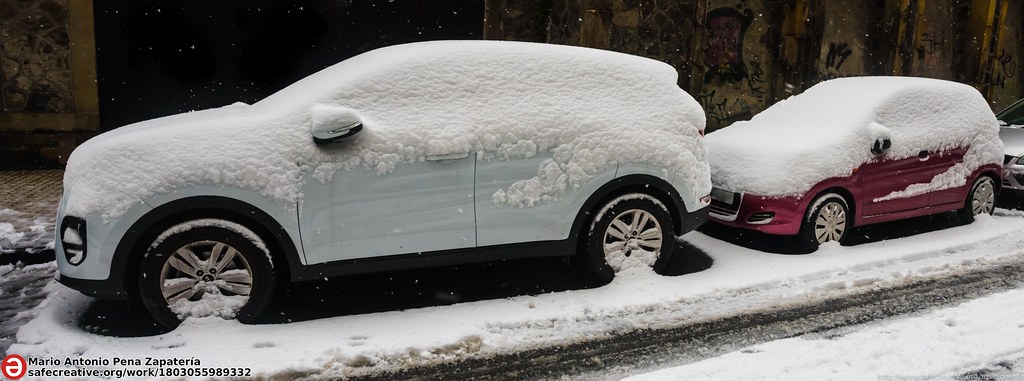If you have ever driven through a snowstorm wondering whether AWD or 4WD gives you more real control, you are not alone. I have spent countless winters testing both systems on icy mountain roads, slushy highways, and frozen parking lots, and what I have learned is that each one behaves differently depending on the terrain and how you drive.

Both systems were designed to improve traction, but they go about it in unique ways. AWD, or all wheel drive, is great for automatically managing grip on mixed conditions, while 4WD, or four wheel drive, gives you manual control and brute strength in deep snow or off road trails. Knowing how each one performs can help you choose the setup that truly fits your winter driving style.
Understanding the Basics
All Wheel Drive (AWD) systems continuously distribute power between the front and rear wheels as needed. They are always active, which means you do not have to flip any switches or press any buttons. AWD cars often use sensors to detect wheel slip, adjusting power instantly to maintain traction.
This makes AWD perfect for drivers who encounter changing road conditions like wet pavement, patches of ice, or shallow snow. Vehicles such as the Subaru Outback, Toyota RAV4 AWD, and Mazda CX 5 AWD use this technology to make winter driving feel smooth and stress free.

Four Wheel Drive (4WD) systems, on the other hand, are more traditional and often found in trucks and off road SUVs. These systems usually allow you to switch between 2WD, 4WD High, and 4WD Low. Power is sent equally to all four wheels when engaged, giving you maximum traction on loose or deep surfaces.
Models like the Jeep Wrangler, Toyota 4Runner, and Ford Bronco are classic examples of vehicles that use 4WD. They are built for tougher terrain and can handle deeper snow, mud, and steep inclines better than most AWD systems.
Driving Experience in Snow and Ice
Having driven both systems in harsh winters, the differences become obvious when conditions get extreme.
In light snow or slush, AWD feels more natural. It reacts instantly to slipping tires and keeps the vehicle stable without you having to think about it. I remember driving a Subaru Forester through a snowy commute in Denver, and while other cars were fishtailing, the AWD system quietly adjusted power to keep me pointed straight ahead. It felt effortless.

In deep snow or unplowed roads, 4WD shines. I once took a Toyota Tacoma up a mountain trail after a snowstorm that dumped nearly a foot of snow. The truck’s 4WD Low mode gave me the torque I needed to crawl uphill without spinning. AWD systems can struggle here because they rely on traction sensors rather than raw torque.
On icy roads, both systems help, but neither can defy physics. AWD may help prevent a skid by constantly managing power, while 4WD gives you grip when starting from a stop. However, neither will help you stop faster on ice—that still depends on your tires and how carefully you brake.
Handling and Stability
AWD vehicles generally handle better on slippery roads because they are tuned for stability and comfort. Power is distributed smoothly between wheels, helping you corner without oversteer or understeer. The system feels invisible, and for most daily drivers, that predictability is exactly what you want.
4WD systems give you control, but they require more driver awareness. Engaging 4WD on dry pavement can strain components, so it is meant for conditions where grip is limited. When used correctly, though, it offers unmatched traction on steep grades, heavy snow, or unpaved winter trails.

Think of it this way. AWD helps you adapt to conditions. 4WD helps you dominate them.
Maintenance and Cost Differences
Because AWD is always active, it uses more complex differentials and sensors that require occasional maintenance. It can also slightly reduce fuel economy compared to a front wheel drive car. The system itself adds cost to the purchase price, but for many people, the added safety and convenience are worth it.
4WD systems are often heavier and include extra mechanical parts like transfer cases and locking differentials. Maintenance is usually more expensive, and using 4WD improperly can wear components faster. However, 4WD vehicles tend to be built tougher overall, with more ground clearance and rugged suspension setups.

If you live in a city or suburb with mostly plowed roads, AWD is the simpler and cheaper option. If you live in a rural or mountainous area where snow piles up fast, 4WD is the more capable choice.
Comparison Table
| Feature | AWD (All Wheel Drive) | 4WD (Four Wheel Drive) |
|---|---|---|
| Traction in Light Snow | Excellent | Good |
| Traction in Deep Snow | Moderate | Excellent |
| Handling on Ice | Smooth and Predictive | Strong but Less Refined |
| Cost | Lower | Higher |
| Maintenance | Moderate | Higher |
| Ease of Use | Automatic | Manual Engagement |
| Best For | City and Highway Drivers | Off Road and Rural Drivers |
Real World Examples
Subaru Outback AWD – Known for its legendary symmetrical AWD system, the Outback provides incredible balance and traction in snow. It is one of the best all around choices for drivers in snowy states like Colorado, Vermont, or Michigan.
Toyota RAV4 AWD – The RAV4’s electronic AWD system adjusts power instantly between front and rear wheels. It gives great stability during winter storms and keeps fuel economy high at the same time.
Jeep Wrangler 4WD – Built for adventure, the Wrangler’s part time 4WD system can handle deep snow, rocky trails, and icy climbs. It is ideal for those who live off the beaten path or enjoy outdoor adventures year round.
Toyota 4Runner 4WD – With a body on frame design and low range gearing, the 4Runner is almost unstoppable in winter conditions. It is more than most people need, but perfect for those who face rugged terrain and heavy snowfall.
Mazda CX 5 AWD – The CX 5 is an example of a modern crossover that blends comfort with capable AWD. It feels refined on icy roads and delivers impressive cornering control without being overbearing.
Which System Gives You More Real Control
Control depends on where you drive and what you face each winter. In most daily situations—like slick city streets, light snow, or slushy commutes—AWD feels more stable and confidence inspiring. It works automatically and adapts faster than you can react.

4WD, however, is the system you want when conditions are extreme. It gives you mechanical strength and full power to all four wheels when traction disappears completely. You feel that control through the steering wheel and the torque under your feet. It is less about comfort and more about capability.
From years of driving both, my rule of thumb is simple. Choose AWD if you spend most of your time on paved roads but want extra grip in winter. Choose 4WD if your roads often go unplowed, steep, or off road. Either way, invest in a good set of winter tires, because no system can save you without proper rubber on the road.
Final Thoughts
Winter driving demands respect for the elements and understanding of how your car behaves when the weather turns nasty. Both AWD and 4WD can give you confidence, but they do it in very different ways.
AWD is your quiet helper, always working in the background to keep you safe on slippery streets. 4WD is your powerful tool, giving you total command when the snow gets deep and the roads disappear.
No matter which system you choose, remember that skill, patience, and preparation make the biggest difference. Respect the conditions, drive smoothly, and your vehicle will reward you with control when you need it most.
Related Articles
- Best AWD SUVs for Winter Driving in 2025
- Top Winter Driving Tips for Snow and Ice
- Best Small SUVs for Mountain Roads
AWD and 4WD each bring their own kind of confidence to the road, and when you understand how they work, you can face any snowy drive with true control.
Let’s Talk Cars
Have a question? A suggestion? Just want to say hi?
You’re in the right place.
Use the form below to reach out to the AutoSpecs Daily team. We're happy to hear from readers, car lovers, first-time buyers, and anyone who's got something to share.
What can you contact us about?
- Feedback on one of our articles
- Ideas for new topics you'd like us to cover
- Questions about cars, gear, or general auto advice
- Media, partnership, or brand inquiries
- Anything else that's on your mind
We check every message that comes through and do our best to respond within 2 to 3 business days.
We don’t list an email address here to avoid spam, but the contact form is the best and fastest way to reach us.
Thanks for stopping by. We're glad you're here.

